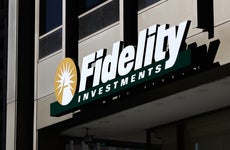What is a safe harbor 401(k)?

The Bankrate promise
At Bankrate we strive to help you make smarter financial decisions. While we adhere to strict , this post may contain references to products from our partners. Here's an explanation for .
A safe harbor 401(k) is a retirement plan that allows a company to avoid the regulations and expenses associated with nondiscrimination tests typically required of a 401(k) or other retirement account. A safe harbor 401(k) can simplify the process for a company looking to roll out a retirement plan to its employees if the company is willing to follow certain rules.
Here’s how a safe harbor 401(k) is set up and what problems it can solve for companies.
Safe harbor 401(k) plan: How it works
A safe harbor 401(k) is similar to a traditional 401(k), which provides a tax-advantaged way for employees to save for retirement. The safe harbor 401(k) must offer some kind of employer contribution to the employee’s account, and it can take one of three forms:
- Non-elective contributions: The employer must contribute at least 3 percent of an eligible employee’s compensation to the plan, regardless of whether the employee contributes anything.
- Basic matching: The employer must match 100 percent of an eligible employee’s contributions up to 3 percent of salary and 50 percent of contributions above 3 percent, but below 5 percent.
- Enhanced matching: The employer must be at least as generous as the basic matching for any contribution level.
The safe harbor 401(k) requires that an employer contribution be fully vested when made – regardless of whether the money is a matching contribution, is limited to employees who contribute or is given to employees whether or not they contribute to the retirement plan.
To satisfy the safe harbor requirements, employers must provide certain information to all plan-eligible employees each year, including:
- The rights and obligations of the employee under the plan.
- How employees can make a deferral to their account.
This information must be provided at least 30 days before the plan’s year begins, but not more than 90 days before. The last day to start a new safe harbor 401(k) is Oct. 1, because the safe harbor provisions must be in place at least three months before the plan year begins. Adding a safe harbor provision to an existing plan is easier, and needs to be in effect by Jan. 1, but employees must be notified of the plan’s rules at least 30 days before they go into effect.
In exchange for following these rules and offering a contribution to employees’ accounts, a company can avoid the annual nondiscrimination tests typically required for a traditional 401(k).
A safe harbor 401(k) has the same annual contribution limits as a traditional 401(k) – $22,500 in 2023 plus an additional $7,500 catch-up contribution for those aged 50 and older.
What problems does a safe harbor 401(k) solve?
A safe harbor 401(k) plan can be used by an employer of any size, but it can be especially beneficial for smaller companies because of the complexity and expense associated with fulfilling the annual nondiscrimination tests that are normal for 401(k) retirement plans.
In a traditional 401(k), for example, the company must test its plan to ensure that it does not discriminate in favor of highly compensated employees relative to lower-paid workers. The plan must pass two tests to remain in compliance:
- Actual deferral percentage: This test compares how much higher-income employees elect to defer into their plan against how much lower-income employees do.
- Actual contribution percentage: This test compares how much higher-income employees put into their plan – including any company match – against how much lower-income employees do.
These numbers need to be within certain bounds prescribed by the IRS, or otherwise the company fails the test and must regain compliance with the law. In effect, the more that lower-income employees save in their 401(k), the greater amount that highly compensated employees can save. In other words, the rules are structured to encourage the company’s higher earners, typically its executives, to drive broader adoption of the plan.
If highly compensated employees are socking away too much or the company is contributing more to their 401(k) plan, relative to lower-income employees, then the company must adjust how it administers its plan. This corrective process can be cumbersome and costly – and may involve refunding contributions made by highly compensated employees, subjecting them to taxes on money that they were not able to protect inside a traditional 401(k).
Why would a company adopt a safe harbor 401(k)?
A company might want to adopt a safe harbor provision in its 401(k) plan for several reasons:
- As discussed, a safe harbor 401(k) plan allows the company to bypass the expenses and complexity of non-compliance tests if the company follows the rules above.
- If the company’s plan has failed compliance testing in a prior year, it might be a good candidate for a safe harbor provision.
- A company’s executives are not able to contribute as much to their retirement plan as they would like.
- The company’s business is predictable and consistently profitable, allowing it to make retirement contributions to employees without difficulty.
- The company has already made employer contributions before.
- Low participation from lower-income workers in the company’s 401(k) plan.
- A small company may have a few key high-earning employees who comprise a large portion of the workforce.
Whatever the reason, a safe harbor provision simplifies the administration of a 401(k) plan.
What other retirement plans are available?
A safe harbor 401(k) is only one of several options that businesses can use to help their employees save for retirement, and some smaller companies may find it more advantageous to utilize other plans that simplify the process, including:
- The SIMPLE IRA may be a good option for companies with no more than 100 employees. This plan also avoids the typical reporting requirements and can be operated through a financial institution.
- The SEP IRA allows you to bypass the complex reporting requirements, too, and you can set up pre-tax and after-tax (Roth) versions of the account.
- A solo 401(k) is a great option for one-person businesses (or two, if including your spouse), and comes in traditional and Roth versions.
These options each have advantages and disadvantages, and will not work in all situations, but they may allow you or the company to stash a lot of cash in your retirement account.
Bottom line
A safe harbor 401(k) can help a company avoid some of the compliance challenges compared to a traditional 401(k) plan in exchange for contributing to its employees’ retirement accounts and keeping them informed of changes to the plan.
Related Articles



